Astrophysics and Cosmology
Astrophysics and Cosmology
-
Astrophysics and Cosmology
| This track aims at providing students with a comprehensive and up-to-date training on theoretical, observational and instrumentation areas in modern astrophysics and cosmology. Students will be involved in forefront research groups, particularly active in the fields of observational and theoretical cosmology, high-energy astrophysics, and multi-messenger astronomy, using ground/space based facilities and high-performance computing, as part of international collaborations. |
| Course | Sugg. | SSD | Att. | Table | CFU | Sem./Anno |
| Measures and observations of celestial X and gamma rays | FIS/01 | B1 | I | 6 | II/1 | |
| Object-oriented programming for experimental data analysis | FIS/01 | B1 | I | 6 | I/1 | |
| Relativity | FIS/01 | B1 | I | 6 | II/1 | |
| Space physics | FIS/01 | B1 | I | 6 | II/1 | |
| Astroparticle cosmology | S | FIS/05 | C | II D | 6 | I/2 |
| Multimessenger astrophysics | S | FIS/05 | C | II D | 6 | |
| Observational cosmology | S | FIS/05 | C | II D | 6 | II/2 |
| S: Strongly suggested for this track |
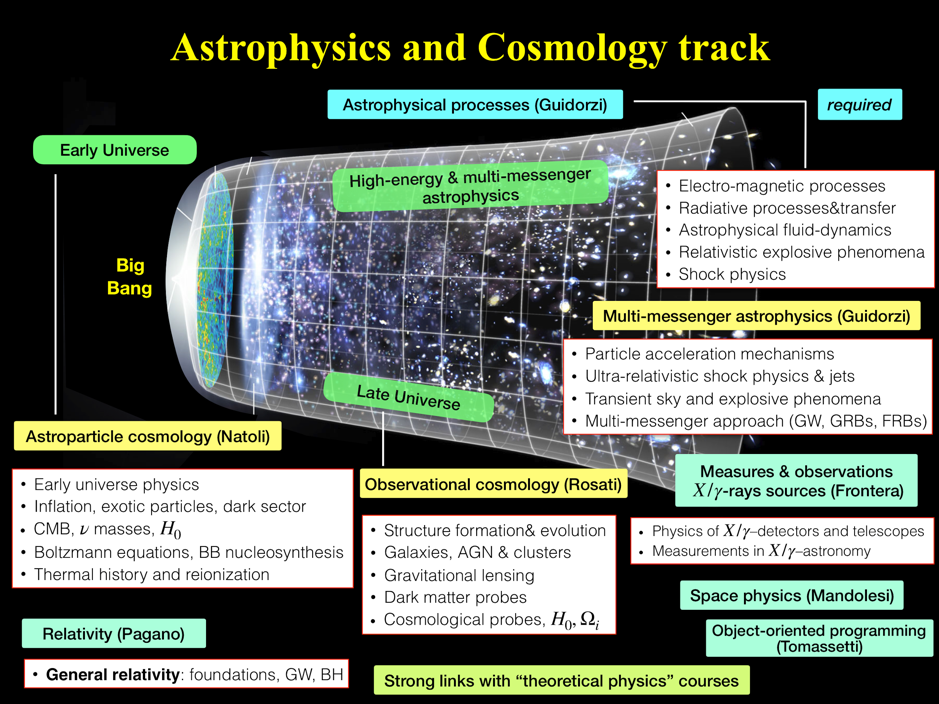
Fig.1: overview of courses in the area of astrophysics and cosmology and their main topics.
The courses offered for the Astrophysics and Cosmology track (see Fig.1) span theoretical, observational and instrumentation areas in modern astrophysics and cosmology. They reflect forefront research activities carried out at the Physics Department in modern fields of observational & theoretical cosmology, from the early to the late Universe, including high-energy and multi-messenger astrophysics.
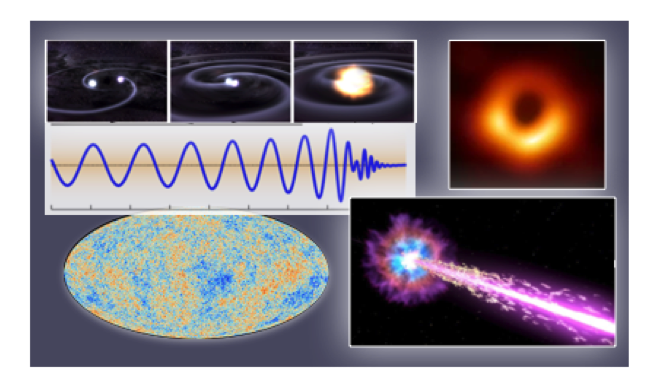
Using the entire Universe as a fundamental physics laboratory has great advantages. It can lead to the discovery of new phenomena and new physics, such as dark matter, dark energy, new energy machines, neutrino physics, inflation in the early Universe. One can study matter and radiation in extreme conditions, thus probing physics laws over the widest range of energies and space-time scales. Moreover, one can uniquely explore gravity, test general relativity and its theoretical extensions, from black hole to cosmological scales, using also gravitational waves.
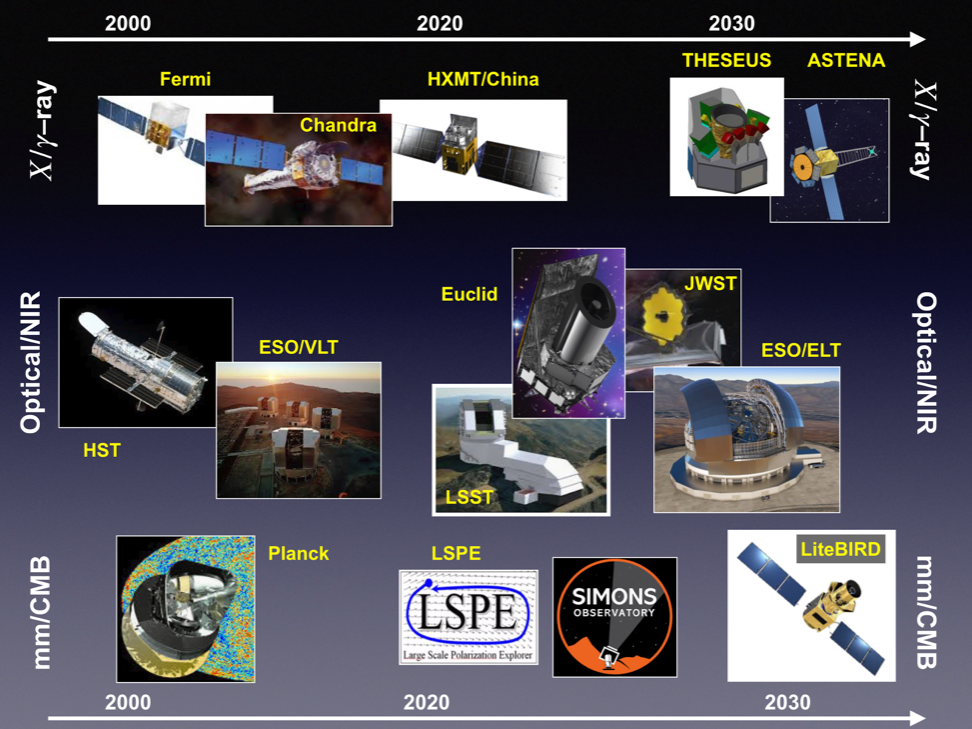
Fig.2: Current and recent ground and space based facilities, in different energy bands, actively used by members of the astrophysics and cosmology group, and those being designed for the next decade and beyond, with significant contributions by the Department groups.
Main Projects:
Early and late Universe Cosmology with the CMB and other probes
Physics is deeply rooted in the scientific method. This means that experimental findings are key for advances in physics knowledge. Theories are developed, refined or rejected on the sole basis of experimental measurements. Modern cosmology — which investigates global properties of the Universe, from its first stages to its ultimate fate — comes without exception. Over the past decades, observational efforts have progressively led the field to the current stage of precision cosmology. Observations of the cosmic microwave background (CMB, the pristine light from the Big Bang) from space missions, balloon-borne experiments, and from ground-based telescopes have provided exquisite measurements in temperature and polarisation. Measurements from the Planck satellite shaped the standard model of cosmology that currently provides the best description of our Universe. Galaxy surveys are mature enough to inform cosmological model builders in a way that is competitive with, and complementary to, the CMB. The current scenario is just a taste of the constraining power of the upcoming generation of experiments that aim to unveil key aspects of fundamental physics yet to be uncovered, from the mechanism of inflation at play in the early Universe to the properties of dark energy that dominates the late evolutionary stages of the Universe.
The cosmology group at the University of Ferrara is leader in observational cosmology. All the members of the cosmology group in Ferrara have a proven track record in CMB data analysis, reduction and interpretation. All members have held and still hold leading roles within major international collaborations, such as Planck (Planck), LiteBIRD (LiteBIRD), Euclid (Euclid), LSPE (LSPE), Simons Observatory (Simons Observatory), CMB-S4 (CMB-S4). These roles reflect the main research activities carried on in Ferrara. The group is versatile and able to contribute to the whole analysis pipeline that leads from raw (time-domain) data to the final products released to the public. The group’s activities include: development and validation of likelihood codes and estimators used for statistical analysis; simulation of realistic analysis pipelines that could inform experimental designs and quantify the experimental performances in terms of achievement of science goals; interpretation of high-level data products in terms of constraints on cosmological parameters (cosmological model building/rejection).
Courses: Astroparticle, Relativity, Space Physics, Observational Cosmology
People: Paolo Natoli, Luca Pagano, Massimiliano Lattanzi, Martina Gerbino
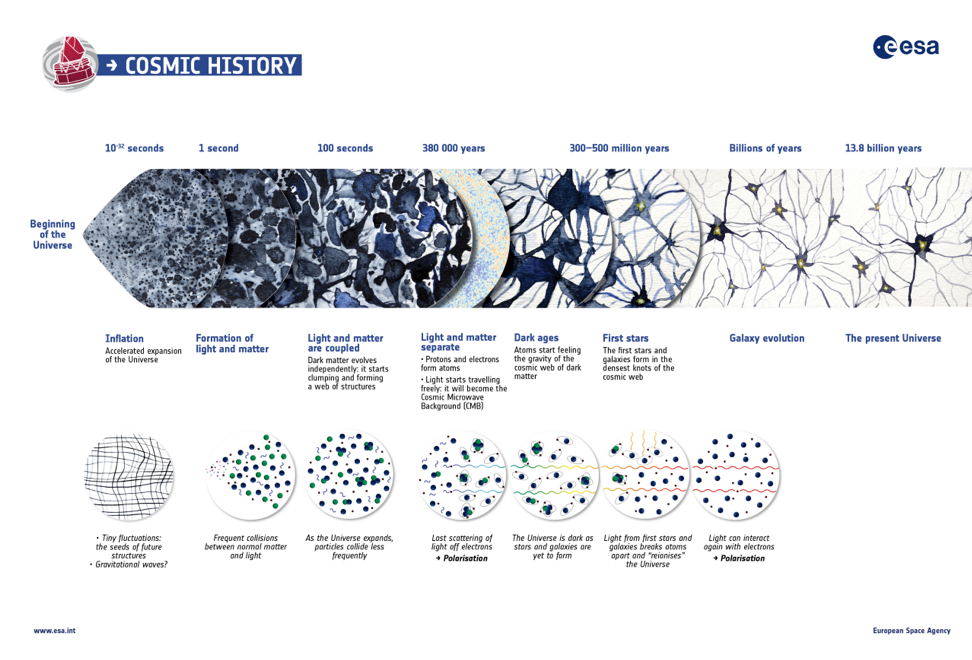
Transient Sky in the Multi-messenger Era
The direct detection of gravitational waves generated by the merging of a binary neutron star system in August 2017, along with the simultaneous detection of a short gamma-ray burst (GRB) from the same source, heralded the birth of so-called multi-messenger astrophysics. The study of transient, often disruptive astrophysical explosions is one of the main drivers of the exploration of the Universe through newly opened channels, such as gravitational waves and high-energy neutrinos, that are complementary to the electromagnetic ones. Not only does the enormous interest in these kinds of phenomena lie in the understanding of involved extreme physical processes that rule them and that can only be effectively explored through a multi-messenger approach, but also in the direct links with open issues of fundamental physics, that cannot be otherwise investigated: strong gravity regime, matter at nuclear densities, particle acceleration through relativistic shocks, nucleosynthesis of heavy elements, an independent method to constrain cosmological parameters such as the Hubble constant H0.
The high-energy astrophysics group in Ferrara is involved in several international collaborations. These include the first Chinese space mission Insight-HXMT entirely devoted to high-energy astrophysics and in particular to the study of the X/gamma-ray transient sky (gamma-ray bursts, some of which are counterparts to gravitational wave sources; the novel phenomenon of fast radio bursts -FRB-). Another ongoing collaboration is with the high-energy team of the Ioffe Institute (Russia) on the analysis and interpretation of the Russian spacecraft Konus/WIND data. Moreover, we are actively involved in international collaborations devoted to the search and characterisation of e.m. counterparts to gravitational waves and other kinds of transients, such as superluminous supernovae and fast blue optical transients. In the GRB field we collaborate with an international group that is still a leader in the prompt optical polarisation measurements of GRBs, with results that helped shed light on the still open issue of the GRB emission mechanism and role of magnetic fields. Our group has a long-standing tradition and heritage in the field of high-energy astrophysics, which stems from the BeppoSAX mission all the way up to the most recent missions such as Swift, Fermi. Last but not least, we are directly involved in the THESEUS mission proposal, that was selected by the European Space Agency (ESA) for a phase A study and is one of the three candidates for M5 class to be launched in the 30’s. Among our activities, a key one concerns the development of a revolutionary technique aimed at focussing hard X/gamma-rays through a so-called Laue lens, based on Bragg diffraction, and which enables a breakthrough improvement in terms of both angular resolution and flux sensitivity at these energies compared with currently flying experiments. Recently, we proposed a to ESA a space mission, called ASTENA (Advanced Surveyor of Transient Events and Nuclear Astrophysics), in response to the Voyage 2050 call, which is currently under evaluation, and for which we submitted a couple of white papers, one mainly devoted to nuclear astrophysics and the other to the deep study of the high-energy transient sky.
Courses: Astrophysical Processes; Multimessenger Astrophysics; Measures and observations of celestial X and gamma rays; Observational Cosmology; Relativity
People: Cristiano Guidorzi, Mattia Bulla, Piero Rosati, Jorge Rueda, Filippo Frontera
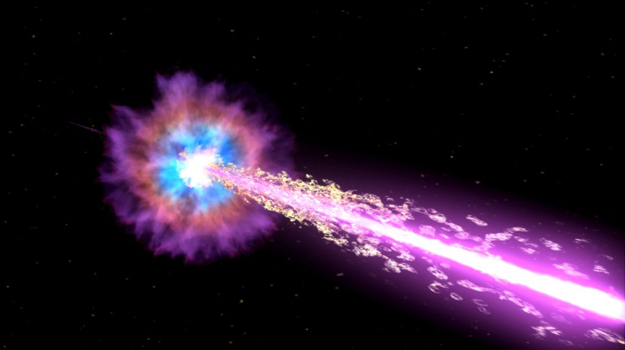
Experimental High-energy Astrophysics
In the context of high-energy astrophysics, the high-energy astrophysics group is actively pursuing experimental activities for the development of instrumentation to be flown in high-energy astrophysics missions. To this end, the group can utilize the LARIX (LArge Italian X-ray) facility, a unique laboratory in Europe where hard X-ray beams are produced to test and calibrate new detectors, as well as to develop a Laue Lens, which is an innovative hard X-ray focusing system. The LARIX facilities includes the LARIX-A, a 6m long lab operating at 10-140 keV with a monochromator system, and LARIX-T, a 70m long tunnel with a fully controlled beamline operating at 60 keV-1 MeV, primarily used for the Laue lens development. These activities are funded by the Italian Space Agency (ASI) and INAF (Istituto Nazionale di Astrofisica) and are part of national (the Bologna INAF-OAS group) are international collaborations, particularly the AHEAD Horizon 2020 European program.
Courses: Astrophysical Processes; Multimessenger Astrophysics; Measures and observations of celestial X and gamma rays; Observational Cosmology
People: Cristiano Guidorzi, Piero Rosati, Filippo Frontera, Enrico Virgilli
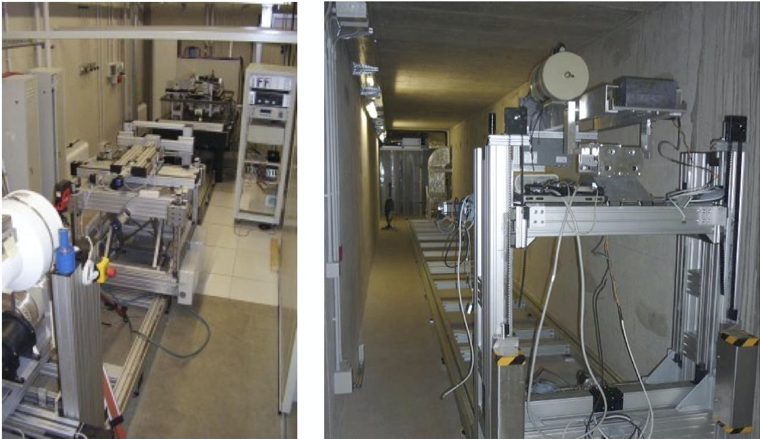
The LARIX hard X-ray facility (LARIX-A left, LARIX-Tunnel right) located at the TechnoPole campus of UniFE
Observational Cosmology and extra-galactic Astrophysics
The Astrophysics Group at UniFE is also actively involved in a number of projects in observational cosmology to constrain cosmological parameters and structure formation using galaxy clusters, and the formation of galaxies and AGN (supermassive black holes). To this end, deep and wide multi-wavelength servers from the X-ray to the near-IR are used from space (e.g. Chandra, Hubble Space Telescope) and ground-based (e.g. the ESO VLT) observatories. In this context, upcoming cosmological missions such as EUCLID and the planned THESEUS will also be exploited. A recent very active area of research exploits gravitational lensing and dynamical techniques to investigate the distribution of dark matter in galaxies and clusters, thus testing the Lambda-CMD structure formation scenario and indirectly the nature of dark matter. An accurate knowledge of the mass distribution of clusters via advanced lens models has recently allowed us to measure the Hubble constant, using the time delay of time variable lensed sources (see figure on SN Refsdal), as well as to use these massive clusters as natural gravitational telescopes to unveil and characterize primordial galaxies in the first billion years after the Big Bang.
Courses: Astrophysical Processes; Observational Cosmology; Multimessenger Astrophysics; Relativity; Measures and observations of celestial X and gamma rays
People: Piero Rosati, Cristiano Guidorzi, Jorge Rueda, INAF associates (OAS Bologna)
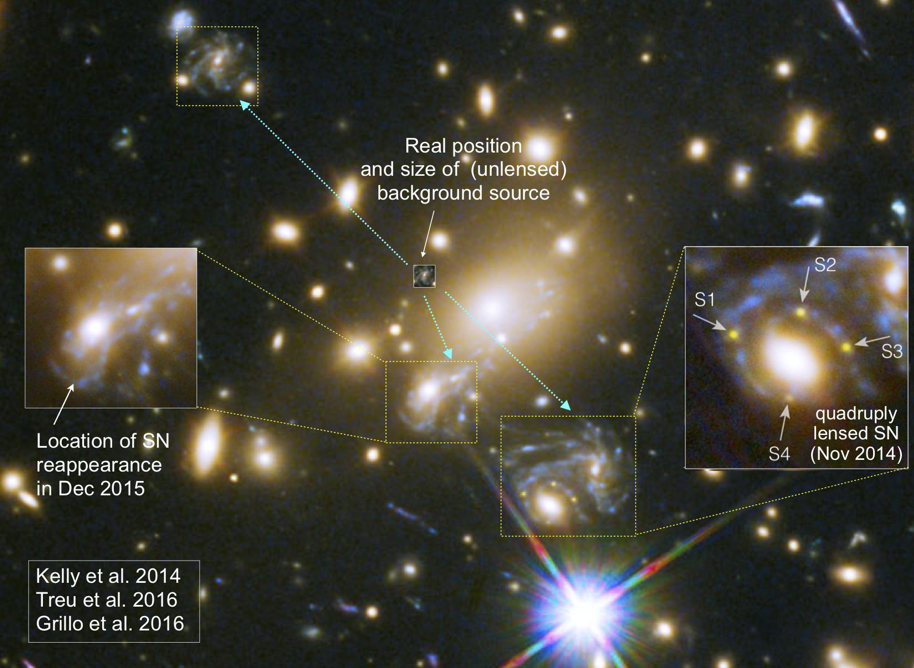
Gravitational lensing by the galaxy cluster MACS1149 at z=0.54, producing 3 magnified and amplified images of a background spiral galaxy at z=1.49, where the Supernova (SN) “Refsdal” was discovered in 2014, further split in 4 images (S1..S4) by a cluster galaxy (a so-called Einstein cross configuration). The SN reappeared approximately 1 year later in a different location enabling a measurement of the Hubble constant from the time delay (Grillo et al. 2020).
